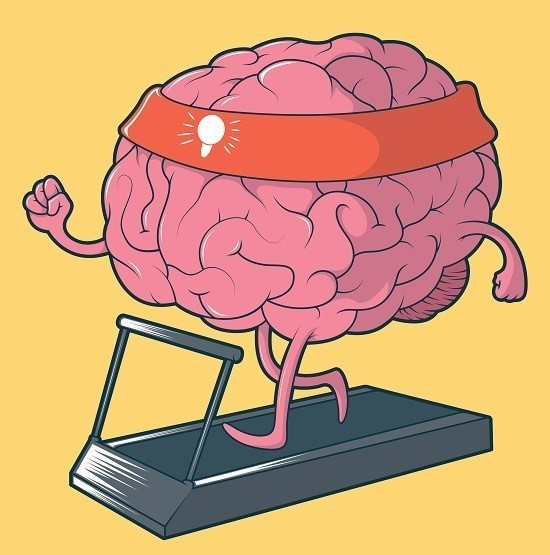From childhood to adulthood,
nurturing intelligence has been seen to affect well-being positively. By
unlocking the full capacity of intelligence from a young age, caregivers and
parents can pave the way for their children to succeed in adulthood.
اضافة اعلان
While childhood development is the strongest
indicator of intelligence, it is not a guarantee of happiness. However,
intelligence is important throughout adulthood, and while it may be nearly
impossible to ensure with complete certainty that your child will be
intelligent, understanding the factors that surround intelligence may help you
create a better environment for them.
What is intelligence?
Intelligence is often used
to describe someone smart, but the truth is, there is no agreed-upon
definition.
Some argue that intelligence is the ability to
perform higher-level thinking such as abstract reasoning, mental
representation, problem-solving, and decision making. On the other hand, some
argue that intelligence is a culmination of a person’s ability to learn,
emotional knowledge, creativity, and adaptation to meet the environment’s
demands effectively.
There are many theories on intelligence, but one of
the oldest is English psychologist Charles Spearman’s two-factor theory. In
this theory, the general intelligence (g factor) is a term used to represent an
individual’s general intelligence across multiple abilities (s factors). S
factors included verbal, spatial, numerical, and mechanical subsets.
Through his analysis, he noticed that those who did
well in one area of intelligence testing also did well in other areas. A
popular example of this was the correlation between music and mathematics.
Spearman then attributed this relationship to a single g factor.
Since then, many other theories have been purposed
that support or refute the two-factor theory. Despite the lack of definition,
it is widely agreed that intelligence is heavily influenced by genetics and environment.
Intelligence and genetics
Although research is still
ongoing, studies suggest that genetics may play a larger role in intelligence
than environment. This was found through numerous studies on sibling and twin
studies. The consensus has been that identical twins (twins who share exact
DNA) share more similar IQ scores than fraternal twins (twins who share similar
DNA).

Genes are genetic information that gives people
specific traits passed on from their biological parents.
When it comes to intelligence, no single gene makes
someone more intelligent than another; instead, intelligence results from
complex interactions between genes.
The expression of genes is typically dependent on
two factors: genetic interactions and gene-environmental interactions. Genes
for specific traits often compete for dominance and typically follow two modes.
The first mode is dominant-recessive patterns. Eye
color is a common example of this. Brown-colored eyes are considered dominant,
whereas blue-colored eyes are considered recessive. If a person has two genes —
one that codes for brown and one that codes for blue — the brown will be the
visible one.
The second mode is co- or incomplete dominance.
Traits such as height or hair color follow this mode in which both traits are
either expressed in equal amounts (co-dominance), or one is slightly greater,
but the other is still visible (incomplete dominance).
When it comes to intelligence, it is generally
regarded as incomplete dominance. But some research in the field suggests a
dominant-recessive pattern. Studies in genomics have found that the
X-chromosome largely carries genes that control cognition. Women carry two X
chromosomes, whereas men only carry one. Therefore, intelligence is more likely
inherited from the maternal side.
Intelligence and environment
Although genetics seems to
play a larger role on intelligence, the environment in which a child is raised
can also affect their intelligence.
Many studies have found that identical twins raised
in separate households have less similar IQ scores than those raised in the
same household. The reason for this may be caused by gene-environment
interactions. An example of gene-environment interactions is height; a person
may have the trait to be tall, but environmental factors such as nutrition and
disease may stunt growth.
Similarly, environments that are not supportive of
intelligence and learning may stunt cognitive development.
Parents and caregivers play the most crucial role in
the early years of a child’s life as they can provide a nurturing environment
for their children that allows them to be more secure, confident, and better
able to face challenges.
Later in childhood development, peers play an
important role in psychology and development. Children are extremely impressionable
and learn behavior from others. Once children become of school age, much of
their time is spent around peers. These social interactions and experiences can
shape a child’s values and personality positively or negatively.
This is why education at schools also plays an
important role in intelligence. Genetics may give an individual the tools to be
intelligent, but education teaches us how to use it.
Culture also heavily influences children and their
development. Cultures that focus more on individualism help develop a sense of
autonomy and self-esteem, whereas cultures that focus on collectivism help
develop a sense of community, family, and society. Additionally, cultural
variations such as social status, income, and educational background can also affect
a child’s development.
How is intelligence measured?
One of the first forms of
intelligence testing is the IQ test. The test was developed in the early 1900s.
IQ stands for intelligence quotient and is used to represent an individual’s
reasoning ability, and it takes into account a person’s mental age and
chronological age.
After taking the test, the IQ score is determined by
dividing a person’s score by their chronological age, then multiplying by 100.

The original IQ test has undergone many changes, and
the modern IQ test is more formally known as the Binet-Simon intelligence
scale. Although it is still used today, there is a major pitfall in its
application to adults.
At a certain point in early adulthood, the level of
intelligence begins to plateau or level off as age increases. To solve this,
the test has since been modified for normal distribution.
For each age
group, all results from the IQ test follow a normal distribution, and the
average of this distribution is considered 100. This modified version primarily
focuses on the total population of IQ test-takers instead the abstract concept
of mental age.
In 1939 David Wechsler published the first
intelligence test specifically designed for adults. This test was known as the
Weschler Adult Intelligence Scale but has since been modified to include the
younger population in a test known as the Weschler Intelligence Scale for
Children.
The Weschler scales’ advantage over the Binet-Simon
scale is that it considers verbal IQ and performance IQ, whereas the
Binet-Simon scale primarily focuses on verbal IQ. The Weschler scales follow a
standardized bell curve, and 95 percent of the population falls in the range of
70–130, which is the average (100) one standard deviation.
Additionally, IQ scores do not have a linear
relationship. An individual with an IQ of 50 does not have half the
intelligence of someone with an IQ of 100.
Why
is intelligence important?
Most of an individual’s intelligence is determined
throughout childhood development. Having a higher IQ has been positively
associated with improved personal relationships, self-acceptance, personal
growth, mastery, and purpose in life, which is why nurturing intelligence is
important.
The relationship between socioeconomic status and
intelligence is deeply interconnected. Having a high IQ can help improve
socioeconomic status by creating better opportunities and quality of life. This
improved socioeconomic status can, in turn, help you exercise and utilize your
IQ.
This symbiotic relationship between intelligence and
socioeconomic status helps to improve overall well-being.
To ensure that you are continuously creating an
intelligence-nurturing environment, engage with material stimulating to the
brain even in adulthood. If you are a caregiver or parent, make sure your child
is in a space that promotes intelligence.
Read more Health
Jordan News





